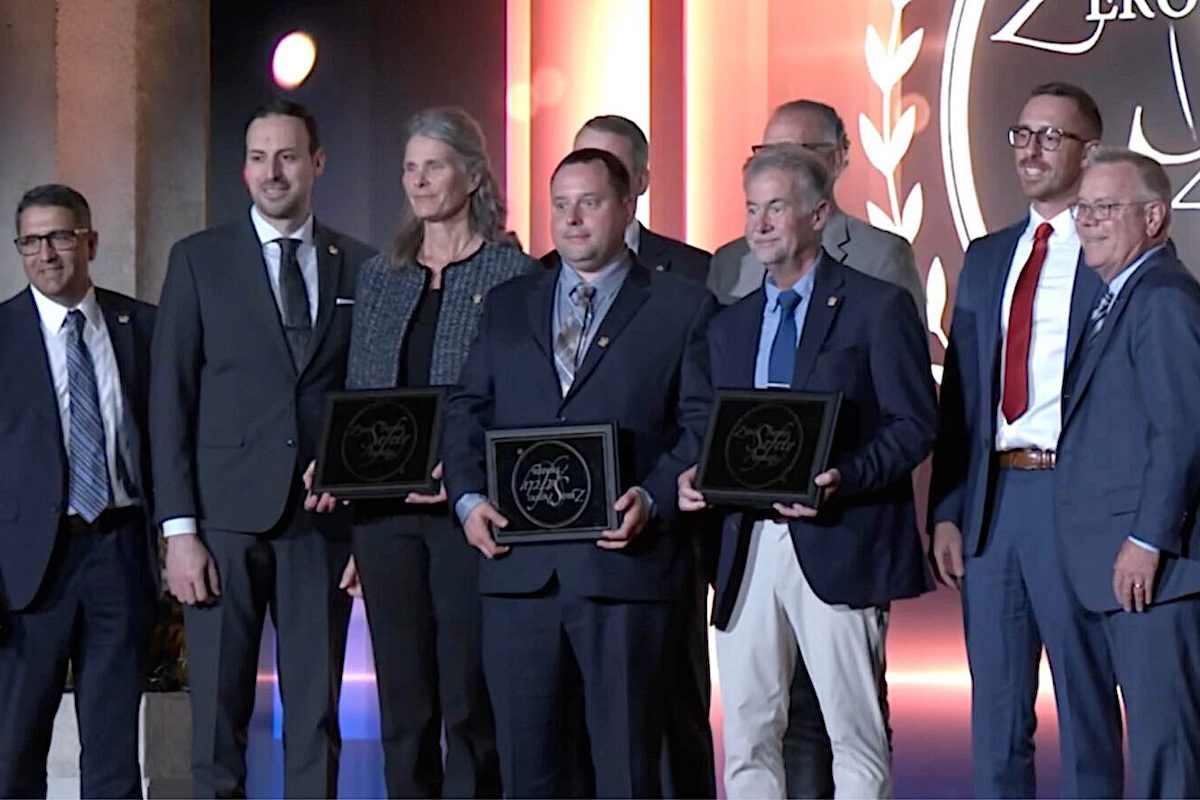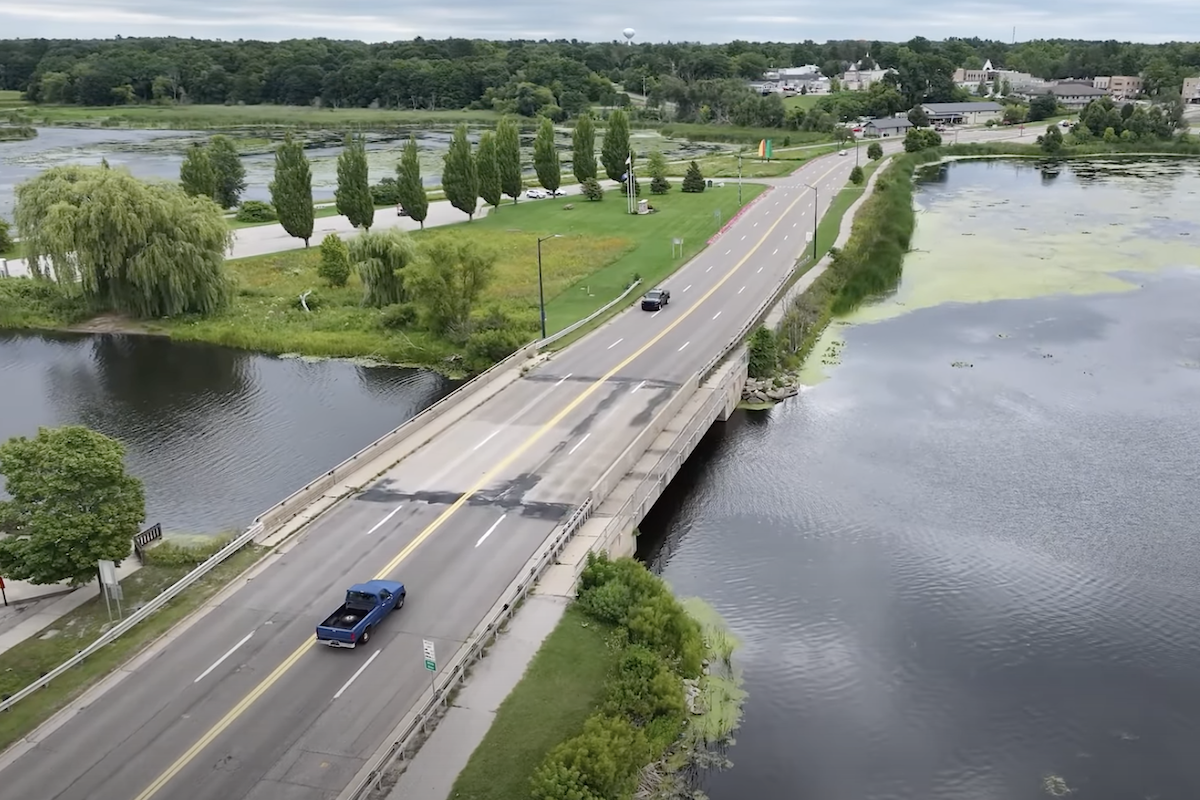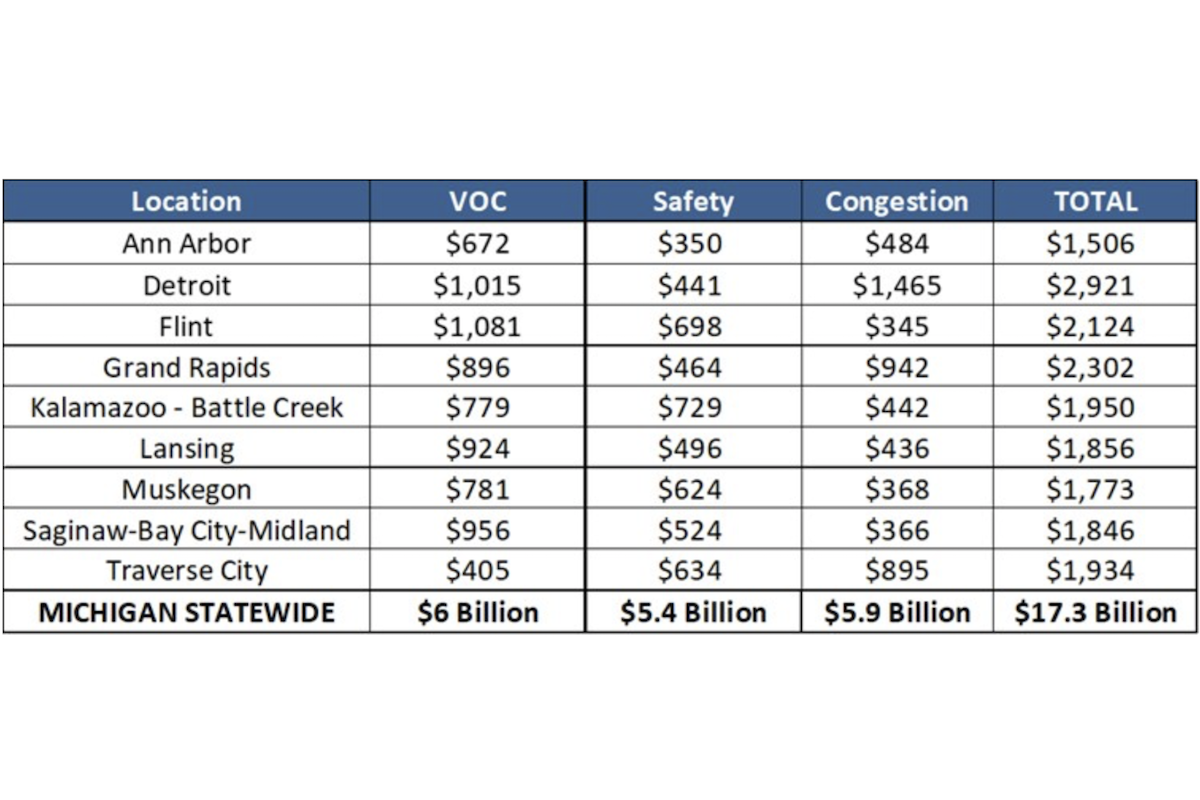During the keynote session for Trimble Dimensions 2024 in Las Vegas, Nevada, Rob Painter, Trimble’s CEO, used an example from the Olympics to illustrate today’s pace of technological change.
At the 1988 Summer Games, Carl Lewis won the 100-meter dash with a time of 9.92 seconds. This year at the Paris Olympics, Noah Lyles earned the gold medal with a time of 9.79, while the last-place finisher in the finals ran the 100 meters in 9.91 seconds.
“Carl Lewis would have been nowhere near the podium had he run that same time today,” Painter said. “That got me thinking about how fast the world moves and how fast world standards continue to rise. Even if you’re at the top of your game at one decade, one year, or one moment, that might not be enough to keep you at the top next year, when everyone around you is always pushing themselves to be better and faster.”
Painter acknowledged how daunting it can be to think about the pace of change and what that requires. However, “Whenever I feel resistant to change or hesitant to step out of my comfort zone, I think about the following quote from American General Eric Shinseki: ‘If you don’t like change, you’re going to like irrelevance even less.’”
At Trimble Dimensions November 11-13, 2024, over 7,000 attendees explored technological change, with the theme of discovering what’s new, visualizing what’s next, and solving challenges now.

| Your local Trimble Construction Division dealer |
|---|
| SITECH Michigan |
The lineup of over 700 sessions included interactive hardware and software demonstrations and presentations on topics ranging from AI to workforce transformation and supply chain optimization. In the Expo Hall, attendees could talk with Trimble experts, visit nearly 100 suppliers of complementary technologies, and de-stress with the adorable canines in the dog park.
Attendees also had the option to travel by bus into the desert to a 15-acre work site demonstrating construction, surveying, and marine technologies.
As construction firms navigate the early stages of what has been called the fourth industrial revolution — the convergence of the digital and physical worlds — the industry is undergoing rapid transformation.
One of the most significant trends emerging in construction is the increasing focus on interoperability and collaboration, Painter said. By connecting people, data, workflows, and ecosystems, construction firms can optimize processes, reduce costs, and improve project outcomes.

| Your local Deere & Co dealer |
|---|
| AIS Construction Equipment |
Interoperability refers to the ability of different software systems and devices to communicate and exchange data. In the construction industry, that means different tools and platforms used by various project stakeholders can work together effectively.
The concept is reaching fruition on a large scale through a partnership between the California Department of Transportation (Caltrans), Trimble, Autodesk, and Esri. In a spotlight session, the three technology firms talked about their collaboration to build interoperability between their unique systems.
“We now have 60 pilot programs going on between all three of these massive technology companies with Caltrans,” said Cyndee Hoagland, Trimble’s Senior Vice President of Owner and Public Sector. “This is a significant impact for everyone working with these technologies in the ability to move data more quickly and have access to that information and transparency to that information faster.”
The partners are working to eliminate duplicate data — leading to duplicate work — by creating a seamless flow between technology platforms. As a result, project teams can streamline workflows and increase efficiency; reduce costs; and utilize accurate, up-to-date data throughout the project lifecycle to improve decision-making.

| Your local Trimble Construction Division dealer |
|---|
| SITECH Michigan |
Trimble also provided an update on the recent expansion of their longstanding partnership with Caterpillar. The new agreement is designed to foster greater interoperability, drive innovation, and accelerate technology adoption.
By simplifying the integration process and providing comprehensive support, the two companies aim to make it easier for construction firms of all sizes to embrace digital transformation. Todd Farmer, Product Manager of Caterpillar’s Construction Digital and Technology Division, noted how clearing the barriers between technologies allows contractors to work on job sites where they might previously have been restricted.
During a media briefing, Trimble executives talked about the company’s pivot from separate technology pieces to interoperability. Mark Schwartz, Trimble’s Senior Vice President of AECO Software, referred to the appification of construction.
“All those applications out in the world were creating data,” he said. “Not all of them came from the same company. Not all of that data could be exchanged. The ecosystem didn’t work efficiently.”

| Your local Trimble Construction Division dealer |
|---|
| SITECH Michigan |
As customers asked what to do with all their data, Trimble shifted focus.
“Now we’re in a new era of data interoperability and open data standards — data that has to work together to truly optimize the workflow and meet the needs of the full ecosystem,” Schwartz said. “It has to go beyond the task. It has to go beyond what we’re trying to do for a certain piece, or silo.”
What does that mean for contractors? Because every company has a unique workflow — which some consider their strategic advantage — Trimble executives stressed their new focus on productivity through a free flow of data.
“These pieces, regardless of where they come from in Trimble, are going to work together,” Schwartz said. “They work together seamlessly, and they’re going to work with stuff that isn’t Trimble because that’s the only way to get the industry to move forward at the pace we think is possible.”

| Your local Trimble Construction Division dealer |
|---|
| SITECH Michigan |
The goal of interoperability at Trimble covers mixed equipment fleets, software, and hardware.
Building on the theme of connections, Trimble also highlighted recent technology improvements and innovations, including:
- The introduction of a free version of their AI-powered project management software, ProjectSight, designed to allow contractors of all sizes to collaborate within their teams as well as with other contractors, architects, engineers, and project owners to gain efficiency and minimize risk
- Enhancements to Trimble App Xchange, which allows software developers to build integrations for easier data sharing between Trimble and non-Trimble solutions, and the launch of Trimble Marketplace to access integrations
- New Siteworks Machine Guidance Module for compact track loaders, allowing users to move the system among multiple machines and job sites
Of course, no discussion of construction technology is complete without addressing autonomous job sites. Painter expects a fully autonomous job site to take longer than many prognosticators predict, with progress coming in steps, starting with current machine control guidance systems.
“To me, that’s an important way we think about it — as a series of progressive automations,” he said. “Then we think about the workflows that make sense to be automated, because we don’t think everything is going to make sense to automate. It’s often machine types or workflows that make sense.”

| Your local Trimble Construction Division dealer |
|---|
| SITECH Michigan |
At this point, that includes compaction, linear trenching, and solar pile driving — technologies on display at this year’s Trimble Dimensions offsite demonstration area.
Trimble Dimensions 2024 included Pitch Day for the eighth annual Construction Startup Competition, hosted by Cemex Ventures, Caterpillar, Dysruptek by Haskell, Ferrovial, Hilti, Leonard by VINCI, NOVA by Saint-Gobain, Trimble, and Zacua Ventures.
Eight winning companies, selected from among hundreds of applicants from over 70 countries, presented their solutions. Three startups received cash prizes and will continue to be evaluated for potential partnership opportunities with the host companies:
- Gold medal — Sodex Innovations, based in Austria, improves surveying by installing laser scanners, GNSS, and cameras on construction equipment, enabling the machines to deliver digital twins of the site in real time.
- Silver medal — Raise Robotics, based in the U.S., specializes in autonomous fastening solutions for onsite construction to improve safety, accuracy, and productivity.
- Bronze medal — Trunk Tools, based in the U.S., developed an AI platform to organize unstructured data and automate workflows. Their flagship agent, TrunkText, allows field workers to ask questions about project documents and receive answers and supporting documentation in seconds.
The five other startups making pitches were:
- GScan — This Estonia-based company uses cosmic rays to look inside critical infrastructure like bridges, tunnels, buildings, and nuclear reactors.
- Kaya AI — This U.S. company developed a platform that provides a centralized view of end-to-end supply chain activities to minimize delays in project execution and break down communication silos.
- Kraaft — Based in France, Kraaft aims to reconcile field and office teams through chats augmented with construction-focused modules to structure data semi-automatically.
- MIXTERESTING — This Austrian company’s software digitally simulates the concrete mixing process to accelerate the development cycle and reduce carbon emissions.
- revitalyze — This Austria-based startup provides a solution to reduce waste by matching materials from demolition projects with building material manufacturers’ demand for secondary materials.







































































